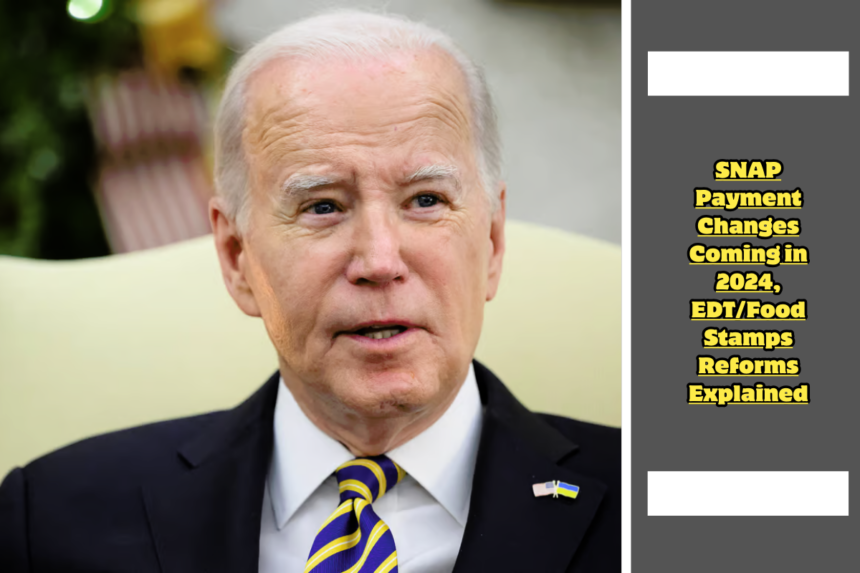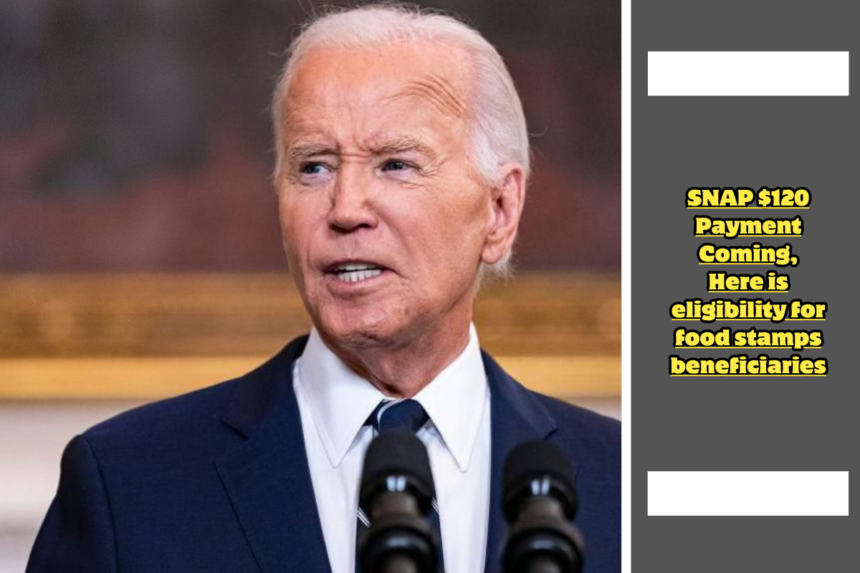In 2024, the Rural Prosperity and Food Security Act of 2024 will become law. This could mean big changes for the Supplemental Nutrition Assistance Program (SNAP).
The Senate Agriculture Committee Chairwoman, Debbie Stabenow, proposed this bill. Its goals are to improve SNAP’s structure and support conservation and climate initiatives. On the other hand, a different draft from Republican lawmakers says that program funding could be cut, which could mean big changes to the amounts of benefits and who is eligible.
The changes to SNAP in 2024 could reshape how the program operates and who qualifies for aid. While the aim is to enhance food security and support sustainable practices, the opposing drafts present a complex scenario in which the outcomes will largely depend on the legislative process. Program beneficiaries and stakeholders in the food security sector should closely monitor these developments to prepare for the upcoming changes.
Expected SNAP Benefit Changes 2024
| Read Also |
Food and farming systems will be more fair because of the new law, which takes conservation and climate change into account in food security plans. It focuses on making public-private partnerships stronger in agricultural studies and helping local farming communities get better access to the supply chain.
The act wants to lower the cost of crop insurance and make it easier for farmers to get land and loans. This will indirectly help with food security by keeping food production stable.
- For SNAP purposes, the military basic allowance for living will no longer be seen as paid income.
- More young adults will be able to get benefits because restrictions will be loosened for college students and people who used to live in foster care.
- Earnings from job and training programs will not be counted toward SNAP benefits.
- Individuals convicted of drug felonies will be allowed to apply for SNAP benefits 30 days before their release.
- Puerto Rico will be included in the SNAP benefits program, expanding the reach of the program.
- Increased funding for SNAP education to better assist beneficiaries in making informed food choices.
Impact of Potential Funding Cuts
In the event that the alternative Republican plan is passed, SNAP could lose $30 billion over the next ten years. These cuts could stop changes for rising food prices, which means that the average family could lose about $7 a month in benefits. Since more than 41 million Americans depend on SNAP, these changes could have a huge effect on food poverty across the country.
Additional SNAP Updates for 2024
Every year, the USDA changes SNAP payments based on how much it costs to live. The following changes have been made to the eligibility standards and benefit amounts for the fiscal year beginning October 1, 2023, and ending September 30, 2024:
The age limit for “able-bodied adults without dependents” (ABAWD) will go up, allowing people up to 54 years old to work by October 2024.
The maximum gross monthly income is 130% of the federal poverty level. Amounts vary depending on the size of the family and where it is located.
The maximum amounts of benefits have been changed, and the exact amounts depend on the state and the size of the family.
Understanding SNAP Benefit Amounts and Eligibility Criteria
The purpose of SNAP benefits and qualifying requirements is to help people in need by giving them money to buy food. These things are changed every year to keep up with changes in the economy and cost of living.
Eligibility Criteria
Example Amount Calculation
| Read Also |
If a family of four makes $1,200 a month, they should:
- People in the household are supposed to pay 30% of $1,200, or $360, for food.
- If a family of four gets the most money possible ($973), their SNAP income would be ($973 – $360) = $613 per month.
SNAP helps people who don’t have enough food by changing benefits based on family needs and economic factors. Knowing these facts helps make sure that people and families who are eligible can get the help they need. These criteria and estimates of benefits make sure that the program helps the people who need it the most while also being able to adapt to changes in the economy and the cost of living.
To read other articles, Click Here

 SNAP $120 Payment Coming, Here is eligibility for food stamps beneficiaries
SNAP $120 Payment Coming, Here is eligibility for food stamps beneficiaries Walmart Weighted Goods Settlement 2024, When will the $500 payment arrive for claimants?
Walmart Weighted Goods Settlement 2024, When will the $500 payment arrive for claimants?